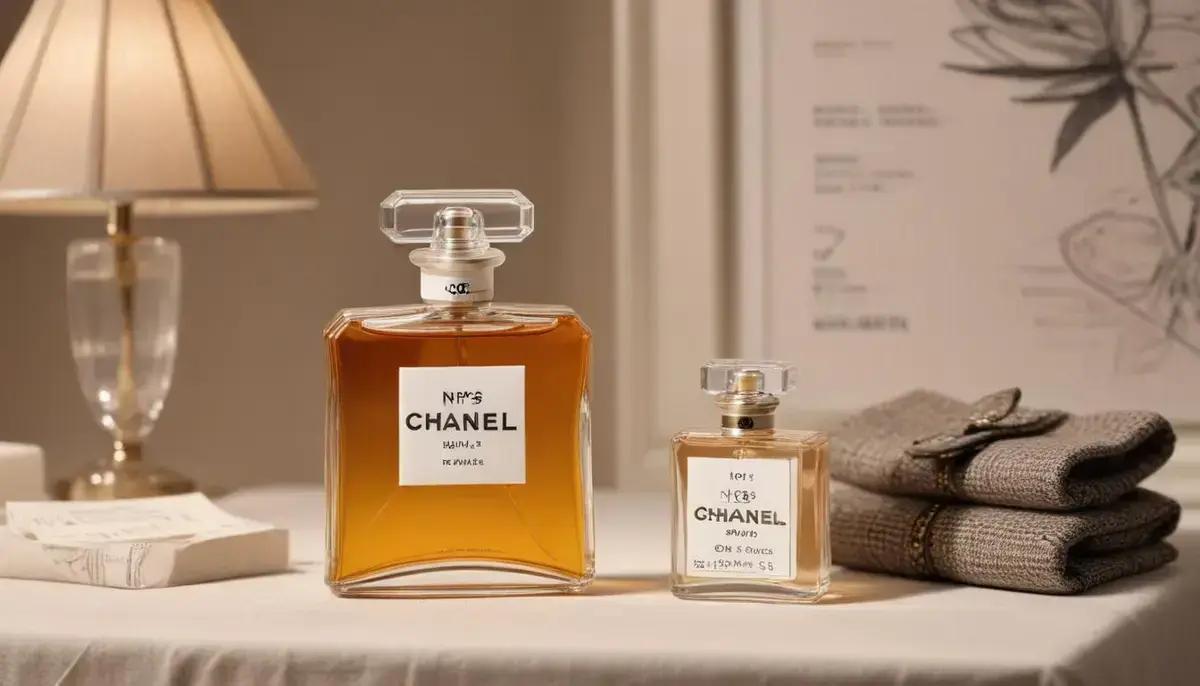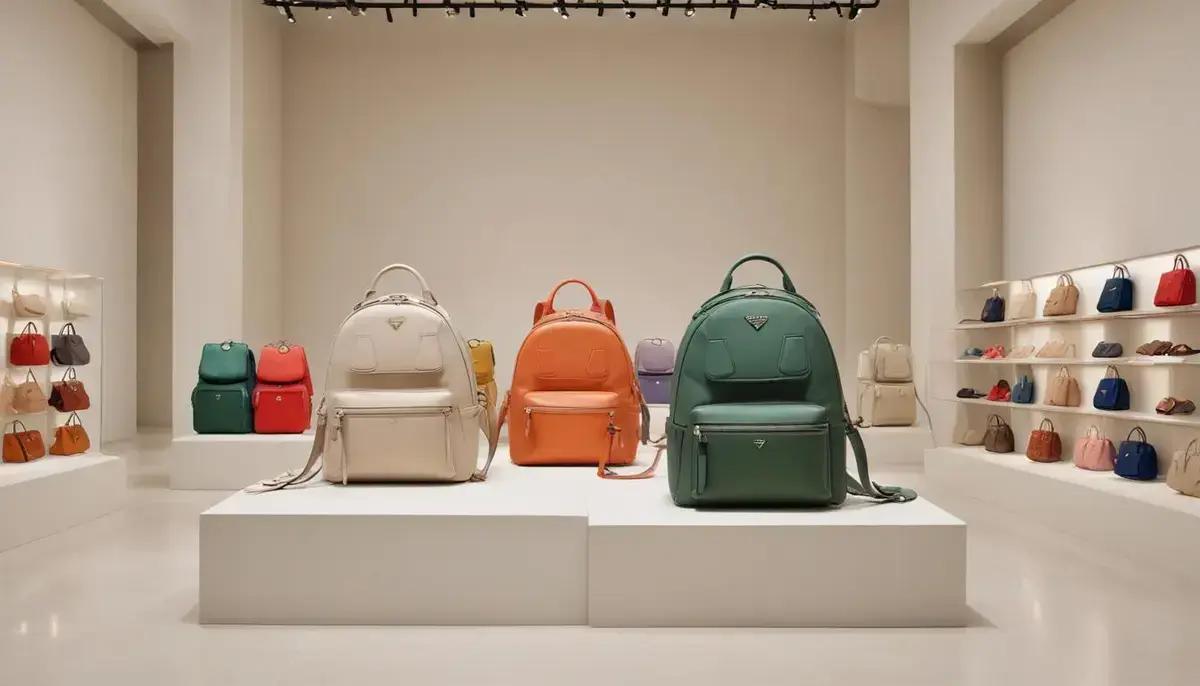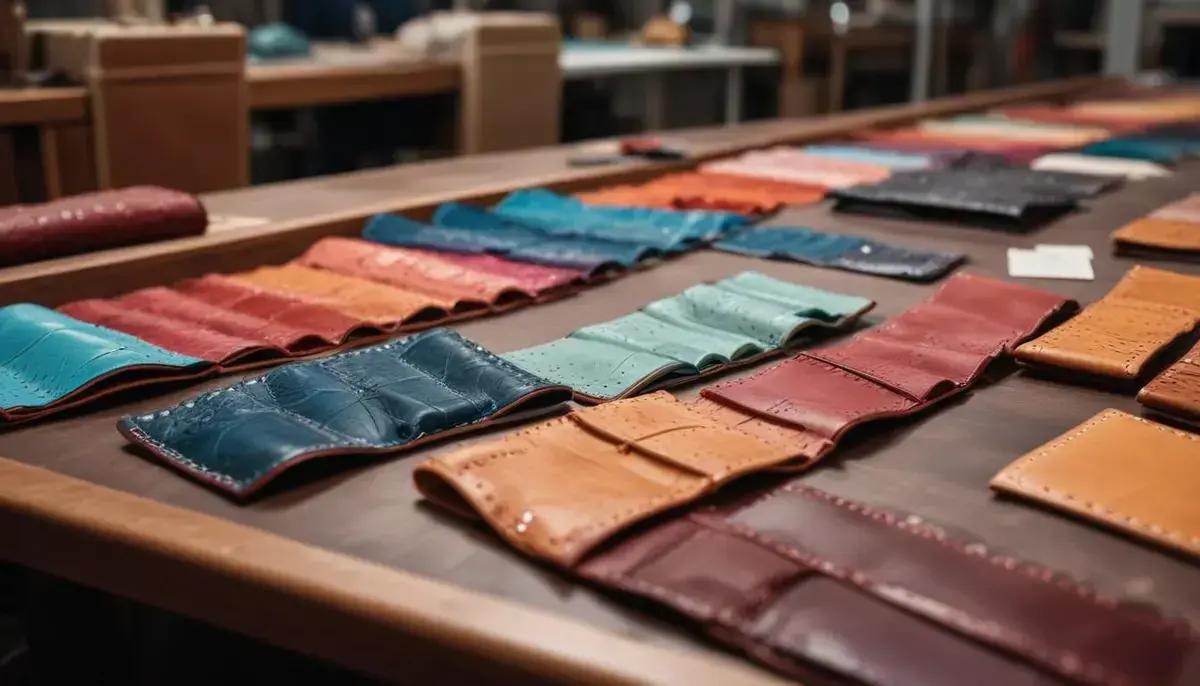Luxury brands continue to captivate consumers worldwide, representing more than just products—they embody dreams, status, and timeless craftsmanship. Have you ever wondered what separates a luxury item from premium alternatives, or why certain brands maintain their prestigious reputation decade after decade?
What defines a luxury brand in today’s market
In today’s market, a luxury brand is defined by more than just high price tags—it’s about exclusivity, craftsmanship, and emotional appeal. Consumers expect impeccable quality, heritage storytelling, and an experience that transcends the product itself.
Key Elements of Luxury Brands
True luxury brands maintain their status through: limited availability (not everyone can own them), handcrafted excellence (often with centuries-old techniques), and iconic design that becomes instantly recognizable. Think of how a Hermès Birkin bag or Rolex watch carries immediate prestige.
The Experience Economy
Modern luxury shoppers prioritize immersive experiences—private showrooms, personalized services, and brand heritage museums. For example, Chanel’s Parisian ateliers offer VIP clients behind-the-scenes access to their couture process.
Digital presence has become crucial too. While maintaining exclusivity, top brands now leverage augmented reality for virtual try-ons and NFT collectibles to engage younger audiences without diluting their premium positioning.
Sustainability as the New Luxury
Today’s definition increasingly includes ethical production and sustainability. Brands like Gucci now highlight carbon-neutral initiatives, proving that responsibility and opulence can coexist—a shift driven by conscious millennial and Gen Z consumers.
Louis Vuitton: Timeless elegance meets modern innovation
Louis Vuitton has mastered the art of blending heritage craftsmanship with cutting-edge innovation. Founded in 1854 as a trunk-maker, the brand now leads luxury fashion while maintaining its iconic monogram canvas – one of the most counterfeited yet irreplaceable designs in history.
Evolution of Iconic Designs
The brand’s signature LV monogram, created in 1896 to prevent counterfeits, remains instantly recognizable. Today, creative directors like Pharrell Williams reinterpret these classics through collaborations that merge streetwear aesthetics with haute craftsmanship.
Technology Meets Tradition
Louis Vuitton invests heavily in digital innovation while preserving artisanal techniques. Their workshops still employ traditional leather-working methods, yet they’ve pioneered augmented reality shopping experiences and NFT-connected products for the digital age.
The brand’s recent Tambour watch collection exemplifies this balance – featuring mechanical movements crafted in Switzerland while incorporating smartwatch capabilities discreetly hidden beneath classic luxury watch faces.
Sustainable Luxury Initiatives
LV’s Circular Leather Goods program allows customers to return used items for refurbishment or recycling. Their ‘Made to Order’ service reduces waste by crafting pieces only when purchased, proving sustainability can enhance exclusivity.
Hermès: The art of handcrafted perfection
Hermès represents the pinnacle of handcrafted luxury, where each piece undergoes meticulous creation by master artisans. The brand’s famous Birkin and Kelly bags can take 18-24 hours of skilled craftsmanship to complete, with some exotic leather versions requiring up to 48 hours of precise work.
The Artisan Process
Every Hermès product begins with the selection of perfect materials – from supple calfskin to rare crocodile hides. Artisans use traditional saddle-stitching techniques passed down through generations, with each stitch done by hand using two needles and linen thread coated with beeswax.
Signature Craftsmanship
The brand maintains 42 specialized métiers (crafts) including leatherworkers, silk printers, and enamel artists. Their silk scarves alone require up to 2 years from design concept to finished product, with each color applied through separate silk-screen processes.
Hermès’ commitment to quality extends to their apprenticeship program, where new artisans train for years before working on actual products. This ensures their centuries-old techniques continue unchanged in an era of mass production.
Modern Relevance of Tradition
While maintaining traditional methods, Hermès cleverly adapts to contemporary tastes through limited-edition collaborations with artists and designers. Their recent collections have featured unexpected materials like recycled seatbelt fabric, proving heritage craftsmanship can evolve.
Chanel: Revolutionary spirit in fashion and fragrance

Chanel revolutionized fashion by liberating women from corsets and introducing timeless elegance. Coco Chanel’s iconic little black dress and boxy jackets became symbols of sophisticated simplicity that still dominate runways today.
Fashion Innovations
The brand introduced menswear-inspired designs for women, including trousers and collarless jackets. Chanel’s signature tweed suits, first created in the 1920s, remain status symbols that combine comfort with unparalleled craftsmanship.
Fragrance Legacy
Chanel No. 5, launched in 1921, became the first abstract perfume in history. Unlike single-flower scents of the era, perfumer Ernest Beaux created a complex bouquet that still ranks among the world’s best-selling fragrances a century later.
Modern Chanel maintains its revolutionary spirit through sustainable initiatives like using organic cotton and developing eco-friendly packaging, while preserving the exacting standards that made its products legendary.
Cultural Impact
From Marilyn Monroe’s famous “just Chanel No. 5” comment to Karl Lagerfeld’s reinventions of classic designs, the brand continues to shape global fashion culture. Their haute couture shows remain among the most anticipated events in the industry.
Rolex: Precision engineering and status symbol legacy
Rolex has perfected the fusion of precision engineering and social prestige over its 118-year history. Each timepiece undergoes rigorous testing, including being submerged in water and exposed to extreme temperatures, to ensure flawless performance.
Engineering Excellence
The brand’s Oyster case, invented in 1926, revolutionized watchmaking as the world’s first waterproof wristwatch. Today, Rolex movements are certified as Superlative Chronometers, maintaining accuracy within -2/+2 seconds per day – far exceeding industry standards.
Iconic Models
From the Submariner (the first dive watch waterproof to 100m) to the Daytona (favored by racing drivers), each collection serves a specific purpose while maintaining Rolex’s signature elegance. The GMT-Master, developed for Pan Am pilots in 1954, remains essential for international travelers.
Rolex’s in-house manufacturing controls every aspect of production, from smelting their own gold to crafting hairsprings in specialized laboratories. This vertical integration ensures uncompromising quality.
Cultural Significance
Beyond timekeeping, Rolex watches have become generational heirlooms and symbols of achievement. The brand’s meticulous craftsmanship and timeless designs ensure their watches often appreciate in value, making them investments as much as accessories.
Gucci: Italian craftsmanship with contemporary flair
Gucci masterfully blends traditional Italian craftsmanship with bold, contemporary designs that push fashion boundaries. Founded in Florence in 1921 as a luggage company, the brand has evolved into a global powerhouse known for its maximalist aesthetic and instantly recognizable motifs.
Signature Design Elements
The GG logo, inspired by founder Guccio Gucci’s initials, and the iconic Web stripe (originally developed for equestrian equipment) remain central to collections. Creative director Alessandro Michele reinvigorated these classics with vibrant colors and eclectic mixes of patterns.
Artisanal Techniques
Gucci maintains Florentine workshops where artisans handcraft leather goods using centuries-old techniques. Their bamboo-handled bags, first created during WWII material shortages, still require precise heating and shaping of real bamboo by skilled craftsmen.
The brand’s sustainable initiatives include Gucci Equilibrium, focusing on carbon neutrality and circular production. Their Demetra material, developed in-house, offers a premium vegan alternative to leather without compromising quality.
Cultural Influence
From Hollywood red carpets to hip-hop lyrics, Gucci has become more than a brand – it’s a cultural symbol of success and self-expression. Their collaborations with artists like Dapper Dan and Harry Styles continue to redefine luxury for new generations.
Cartier: Jewelry mastery spanning three centuries
Cartier’s legacy as the ‘Jeweler of Kings and King of Jewelers’ spans over 175 years of unparalleled craftsmanship. From royal tiaras to modern love bracelets, their creations represent the pinnacle of jewelry artistry and timeless design.
Royal Heritage
Founded in 1847, Cartier became the official purveyor to numerous royal courts, crafting crowns for King Edward VII and creating the first wristwatch for aviator Alberto Santos-Dumont. Their panther motif, introduced in 1914, remains one of the most coveted symbols in luxury jewelry.
Iconic Collections
The Love bracelet, designed in 1969 with its distinctive screw motif, revolutionized fine jewelry as wearable art. Cartier’s Tank watch, inspired by WWI military vehicles, set the standard for rectangular timepieces with its clean geometric lines.
Cartier’s high jewelry workshops in Paris still employ techniques unchanged since the 19th century. Master jewelers may spend over 1,000 hours on a single piece, selecting only the finest gemstones and perfecting every microscopic detail.
Modern Innovations
While honoring tradition, Cartier embraces contemporary designs and ethical sourcing. Their [Clash de Cartier] collection plays with unconventional shapes, proving even heritage brands can push creative boundaries while maintaining exceptional quality standards.
Prada: Minimalist sophistication and avant-garde design

Prada redefined luxury fashion with its minimalist aesthetic and intellectual approach to design. Founded in 1913 as a leather goods house, the Milanese brand became synonymous with understated elegance that challenges conventional notions of glamour.
Design Philosophy
Miuccia Prada’s ‘ugly chic’ revolution transformed fashion by elevating simple nylon backpacks and geek-chic glasses to status symbols. The brand’s clean lines, neutral palettes, and lack of obvious logos created a new language of discreet luxury.
Iconic Innovations
Prada’s nylon backpack, introduced in 1984, proved luxury could be practical. Their pointy-toe shoes and minimalist handbags became wardrobe staples that balanced avant-garde design with wearability.
The brand’s architectural stores, designed by Rem Koolhaas, reflect their design ethos – spaces that feel more like contemporary art galleries than traditional boutiques, with changing industrial interiors that surprise regular customers.
Cultural Impact
From dressing Michelle Obama to collaborating with contemporary artists, Prada maintains its intellectual edge in fashion. Their Fondazione Prada arts complex in Milan demonstrates how the brand merges fashion, art, and architecture into a cohesive vision of modern sophistication.
Tiffany & Co.: American luxury and iconic blue boxes
Tiffany & Co. has epitomized American luxury since 1837, transforming from a stationery shop to the world’s most recognizable jewelry brand. The iconic Tiffany Blue Box® became a universal symbol of elegance and romance, famously declared by Audrey Hepburn in ‘Breakfast at Tiffany’s’ as the only place that could calm her character’s nerves.
Signature Collections
The Tiffany Setting engagement ring, introduced in 1886, revolutionized diamond rings by lifting the stone above the band to maximize light reflection. Their Return to Tiffany heart tag collection became a millennial status symbol, while the modern Tiffany T line blends bold geometry with timeless appeal.
Craftsmanship and Innovation
Tiffany maintains its own diamond grading standards that exceed industry norms. Their gemologists developed proprietary cuts like the Tiffany True® to enhance a diamond’s natural brilliance. The brand’s studio in Rhode Island continues traditional silversmithing techniques while incorporating modern design aesthetics.
Tiffany’s cultural impact extends beyond jewelry – from designing the NFL’s Vince Lombardi Trophy to creating the modern version of the New York Yankees’ logo. Their Fifth Avenue flagship remains a tourist attraction, with its recently renovated interiors featuring immersive art installations.
Burberry: British heritage with trench coat legacy
Burberry represents the quintessential British luxury aesthetic, blending heritage craftsmanship with contemporary style. Founded in 1856, the brand revolutionized outerwear with its iconic trench coat, originally designed for British military officers during World War I.
The Trench Coat Legacy
Burberry’s Gabardine fabric, invented in 1879, was the first waterproof, breathable textile. Each authentic trench coat still undergoes more than 100 production steps in their Yorkshire factory, featuring signature details like the gun flap, storm shield, and D-ring belt.
Signature Patterns
The Burberry check, introduced in the 1920s as a coat lining, became one of fashion’s most recognizable patterns. After a period of overexposure, creative director Riccardo Tisci reimagined the classic check in fresh colorways and contemporary applications.
Burberry maintains its heritage while innovating with digital experiences like social retail stores and blockchain-tracked products. Their commitment to sustainability includes carbon-neutral runway shows and a pledge to become climate positive by 2040.
Cultural Influence
From dressing explorers like Roald Amundsen to appearing in classic films, Burberry’s trench coats have become cultural icons. The brand’s ability to balance tradition with modernity makes it a benchmark for heritage brands navigating the digital age.
Dior: Haute couture excellence and beauty empire
Christian Dior revolutionized post-war fashion with his New Look in 1947, defining an era of feminine elegance with cinched waists and full skirts. Today, Dior maintains its position at the pinnacle of haute couture while expanding into a global beauty empire.
Couture Mastery
Dior’s Paris ateliers continue traditional techniques where a single gown may require 300 hours of handwork. The brand’s iconic Bar jacket, with its sculpted waist and soft shoulders, remains a cornerstone of their collections, reinterpreted by each creative director.
Beauty Innovations
Dior’s Miss Dior fragrance, launched in 1947, pioneered the concept of fashion-branded perfumes. Their makeup line introduced revolutionary products like the iconic Dior Addict lipstick and the bestselling Diorshow mascara.
The brand’s sustainable initiatives include the Dior Vertical program for traceable raw materials and eco-designed packaging. Their skincare lines incorporate science and luxury, like the prestige Capture Totale collection developed with cutting-edge research.
Cultural Legacy
From dressing royalty to collaborating with contemporary artists, Dior maintains its artistic vision across all product categories. The brand’s ability to balance heritage with innovation makes it a benchmark for luxury houses worldwide.
Why these brands command premium pricing

Luxury brands justify their premium pricing through a combination of exclusive craftsmanship, brand heritage, and psychological value that transcends the physical product. These elements create an aura of desirability that consumers are willing to pay extraordinary prices to access.
Artisanal Production Costs
Unlike mass-market goods, luxury items often involve hundreds of hours of skilled labor. A single Hermès Birkin bag requires 18-24 hours of hand-stitching by master craftsmen, while Patek Philippe watches can take 9-12 months to assemble.
Material Superiority
Luxury houses source exceptional materials – from ethically harvested crocodile skins to flawless diamonds. Cartier uses only the top 1% of gemstones, and Brunello Cucinelli selects the softest cashmere from Mongolian goats.
The brand equity built over decades (or centuries) commands premium pricing. Consumers aren’t just buying a product – they’re buying into a legacy, as seen with Chanel’s enduring value or Rolex’s reputation for precision.
Exclusivity Economics
Limited production runs and strategic scarcity maintain desirability. Louis Vuitton deliberately limits popular items, while Rolex produces far fewer watches than demand requires, creating multi-year waiting lists.
Investment value and resale potential of luxury items
Luxury items often outperform traditional investments, with certain pieces appreciating 10-20% annually. The Hermès Birkin bag has shown better returns than gold or the S&P 500 over the past 35 years, with rare models selling for triple their retail price within months.
Best Performing Categories
High-end watches like Patek Philippe and Rolex maintain the strongest resale value, often selling above retail. Limited edition sneakers from collaborations like Dior x Air Jordan have shown 1,000%+ appreciation in secondary markets.
Factors Affecting Value
Key determinants include: rarity (limited editions command premiums), condition (unworn with original packaging fetches most), and provenance (celebrity-owned pieces gain value). Authentication certificates from services like Entrupy can increase resale prices by 30%.
The pre-owned luxury market is projected to reach $85 billion by 2025, with platforms like The RealReal and Vestiaire Collective making luxury investments more accessible. Certain Chanel handbags have shown 15% annual appreciation since 2010.
Risks to Consider
Not all luxury items appreciate – seasonal fashion pieces typically lose 50-70% value. Market saturation (like the recent Rolex price correction) and counterfeit risks require careful research before investing.
The Enduring Power of Luxury Brands
From Hermès’ hand-stitched perfection to Rolex’s precision engineering, these luxury brands represent more than products – they embody craftsmanship, heritage, and status that transcends generations.
Their ability to command premium prices while maintaining desirability proves true luxury isn’t about trends, but timeless quality and exclusivity. Whether as personal indulgences or alternative investments, these brands continue to set the standard for excellence.
As we’ve seen, what makes these brands special isn’t just what they sell, but the stories they tell and the dreams they represent. In a world of mass production, they remind us of the enduring value of true artistry and attention to detail.







